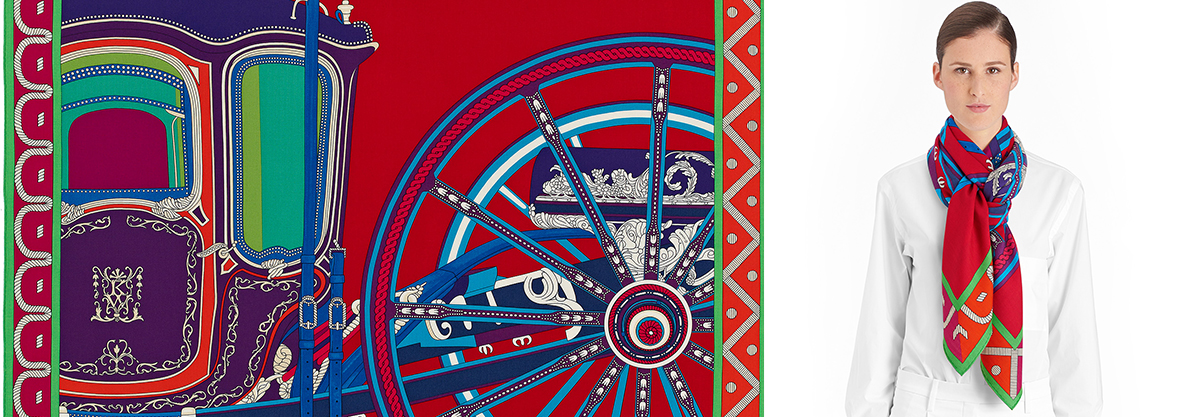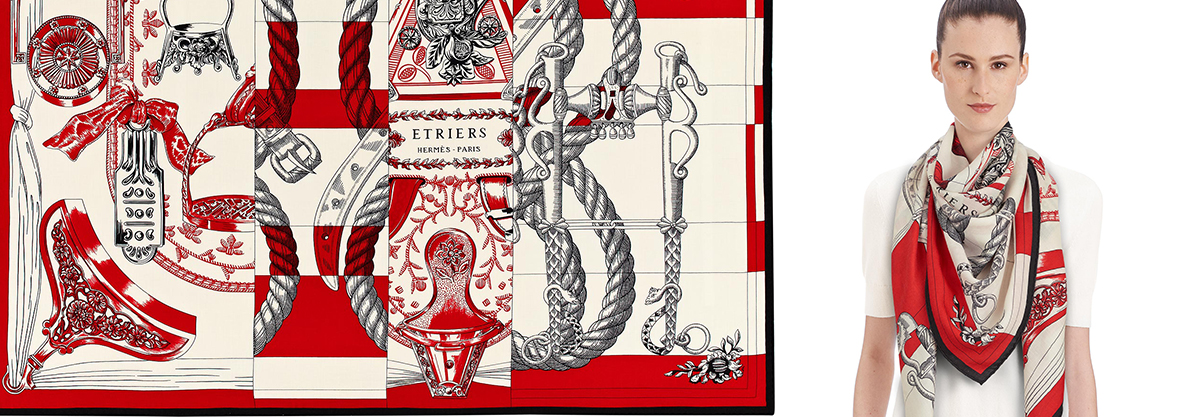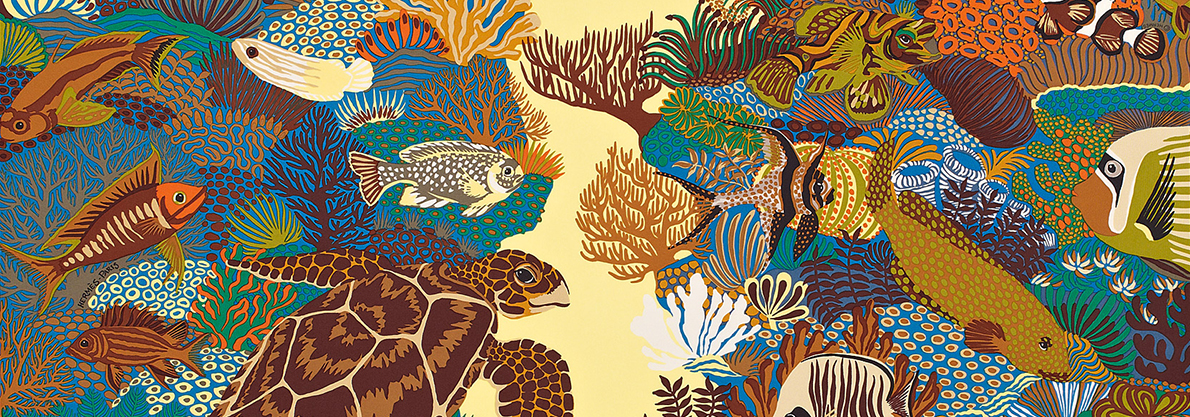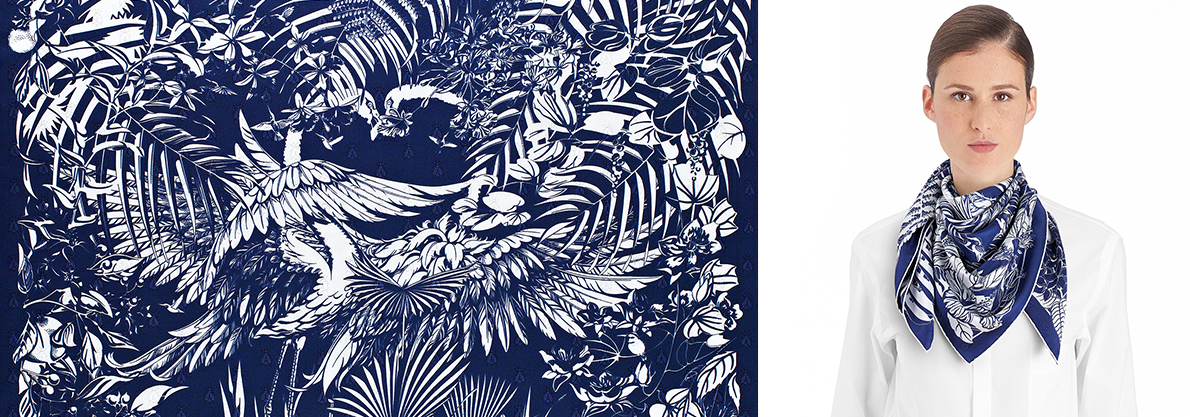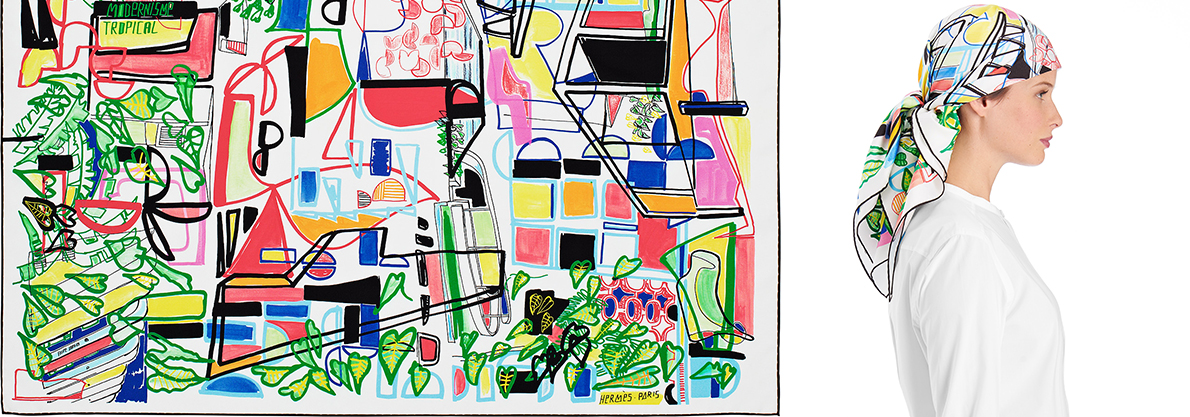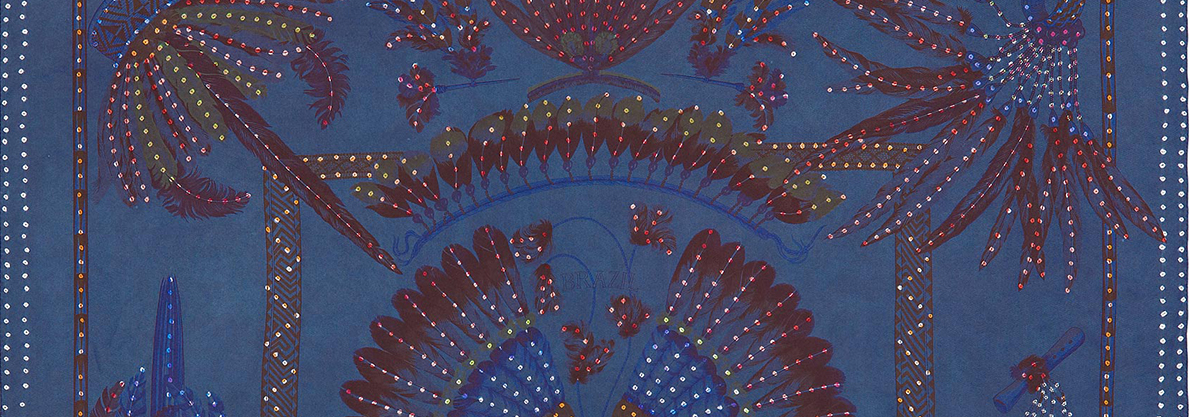![]()
Il carrè di Hermès, dai soldati napoleonici ad oggi
La storia del carré in twill di seta di Hermès parte da molto lontano, quando da accessorio comune per i soldati napoleonici diventa un accessorio usato dalle donne sino a trasformarsi in leggenda quando a sfoggiarlo sono dive come Grace Kelly e Audrey Hepburn. Il suo primo successo mondiale, ossia il foulard di Hermès che ancora si ricorda e si celebra come il primo che trasformò un pezzo di stoffa da annodare attorno al collo in un accessorio senza tempo che tutti desideravano indossare, risale al 1937 con quello che è considerato il primo vero foulard Hermès: in twill di seta cm. 90X90, si chiamava "Jeu des Omnibus et Dames Blanches" e fu disegnato da Hugo Grygkar. Oggi carrè, foulard e stole di Hermès sono famosi in tutto il mondo per i loro colori, per la seta pregiata e le loro stampe vivaci, eleganti e sofisticate.
The Hermès carrè, from Napoleonic soldiers until today
The story of the Hermès carré, made in silk twill, parts from afar, when by common accessory for napoleonic soldiers becomes an accessory used by women up to turn into legend when to wear it are stars and iconic women like Audrey Hepburn and Grace Kelly.
His first international success, the Hermès scarf that still remembers and is celebrated as the first who transformed a piece of fabric to tie around the neck in a timeless accessory that everyone wanted to wear: the first success dates back to 1937 with what is considered the first true Hermès scarf made in silk twill, cm 90x90, named "Jeu des Omnibus et Dames Blanches" and disegned by Hugo Grygkar. Today the Hermès carrè, scarves and stoles are world famous for their colors, silk and their bold prints, so elegant and sophisticated.


